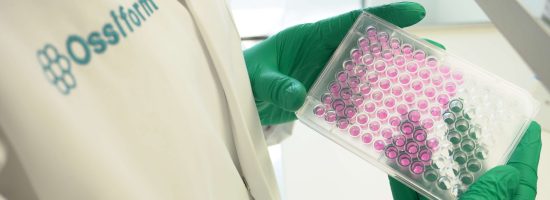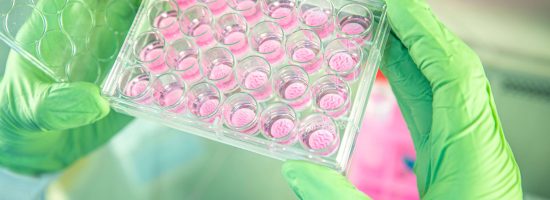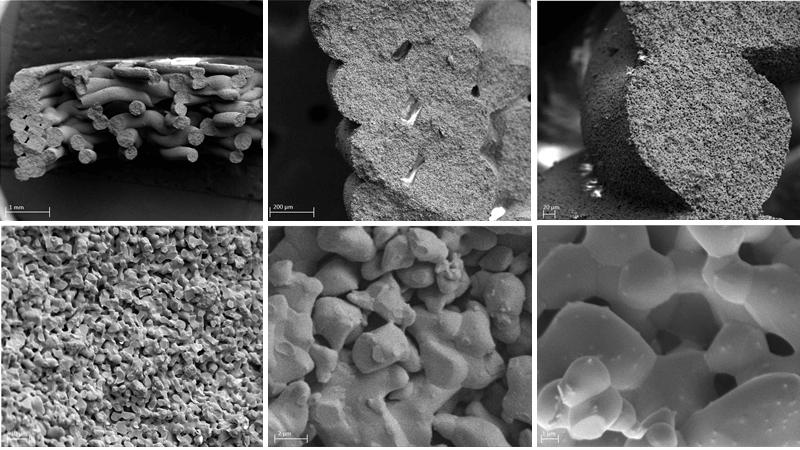Ossiform Research Line
A Clinically Relevant Animal-Free Alternative
Easy-to-use and compatible with common in vitro techniques
A wide variety of diseases can affect our bones, such as osteoporosis, osteoarthritis, bone tumors, and osteomyelitis. Developing treatments for such diseases requires bone models wherein disease mechanisms can be studied, and new treatments can be tested. To enable scientists to do this important work, Ossiform® is offering a porous bone-like scaffold based upon 3D printed β-tricalcium phosphate (β-TCP).
The P3D Scaffold is used to create more relevant tissue- and disease models that capture the complex interplay between cells, and can also be used in vivo.

Mimic hard tissue in vitro with 100% polymer-free bioceramic scaffolds
The idea behind P3D Scaffolds is to give researchers the opportunity to perform their in vitro experiments in a clinically relevant context that mimics the complexity of the tissue.
This allows for more realistic tests that are more likely to yield reliable results when subsequently translated.
The porous 3D structure supports the natural self-organization of cells and maintains relevant cell signaling. By enabling the creation of more relevant co-culture models, we aim to help researchers enhance in vitro research and accelerate the development of new human therapies while reducing the need for animal testing.
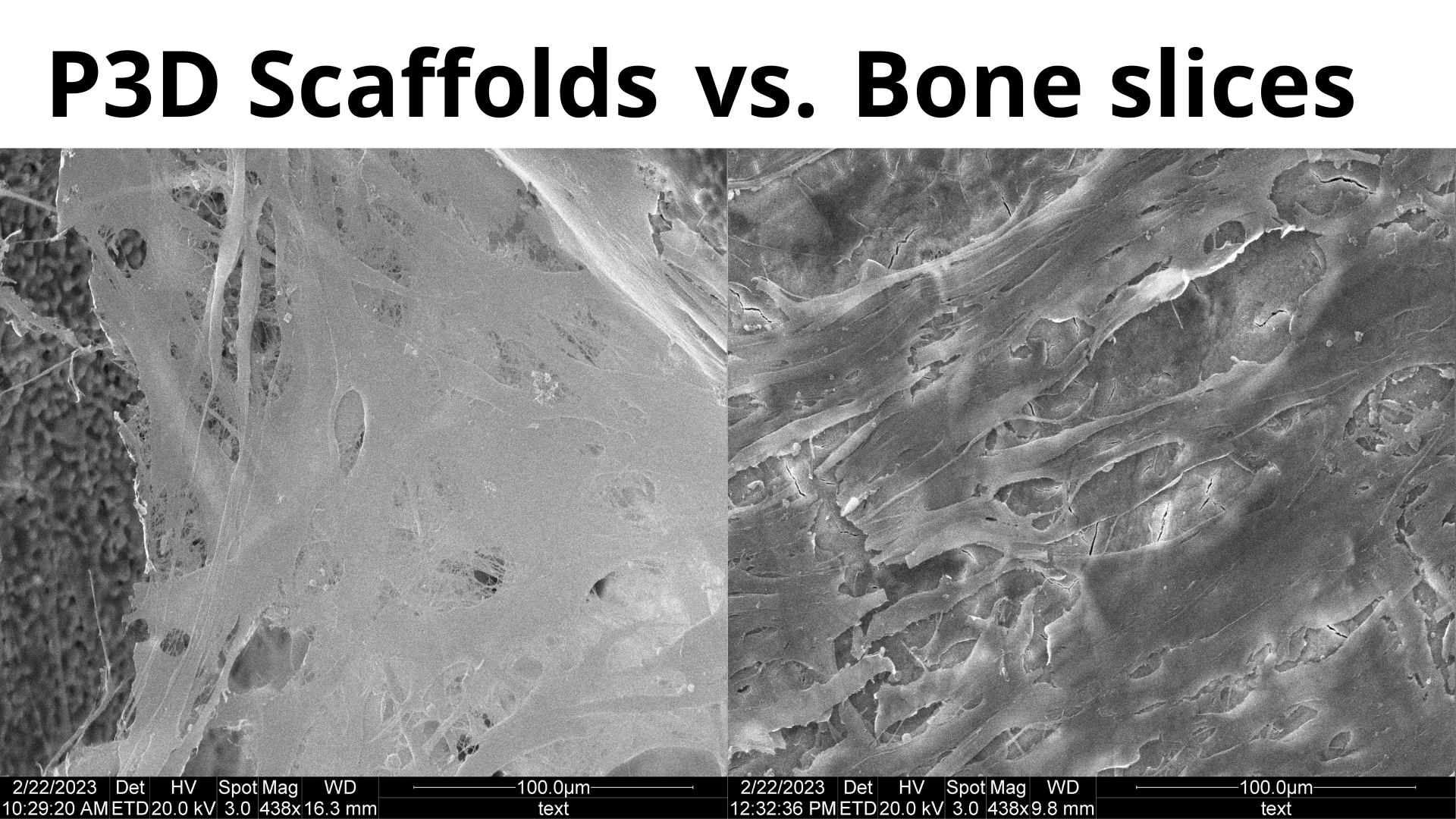
Why 3D Printed Scaffolds?
Ossiform® 3D prints the β-TCP structures with porosities to maximize the surface area onto which cells can attach. Our 3D structures allow researchers to add different cells and pharmaceuticals onto these structures to study how they interact with each other and the calcified bone within its pores. For example:
- Mesenchymal stem cells or osteoblasts can be added onto the P3D Scaffold to study how new bone develops in bone grafts.
- Bone destruction in osteoporosis/arthritis can be imitated by seeding osteoclasts and macrophages onto the scaffolds.
- The development of bone tumors and spreading of cancerous cells through the outer calcified bone matrix can be studied by seeding cancerous cells onto the P3D Scaffolds.
- Osteomyelitis and the subsequent destruction of bone can be mimicked by adding bacteria and immune cells to the P3D Scaffolds. This enables you to study the mechanisms behind the bacteria’s destruction of the hardened calcified bone as well as how bacteria are able to evade the immune system and antimicrobial pharmaceuticals
Why Tricalcium Phosphate?
The P3D Scaffolds are made from a nonpolymeric bioink consisting of β-TCP which facilitates a realistic cell differentiation and proliferation.
As the scaffolds are made of β-TCP instead of HA, you can easily distinguish between mineral from the scaffold and mineral deposited by osteoblasts. While β -TCP is not the exact mineral that our bones are composed of, the bone-interacting cells perceives it as such.
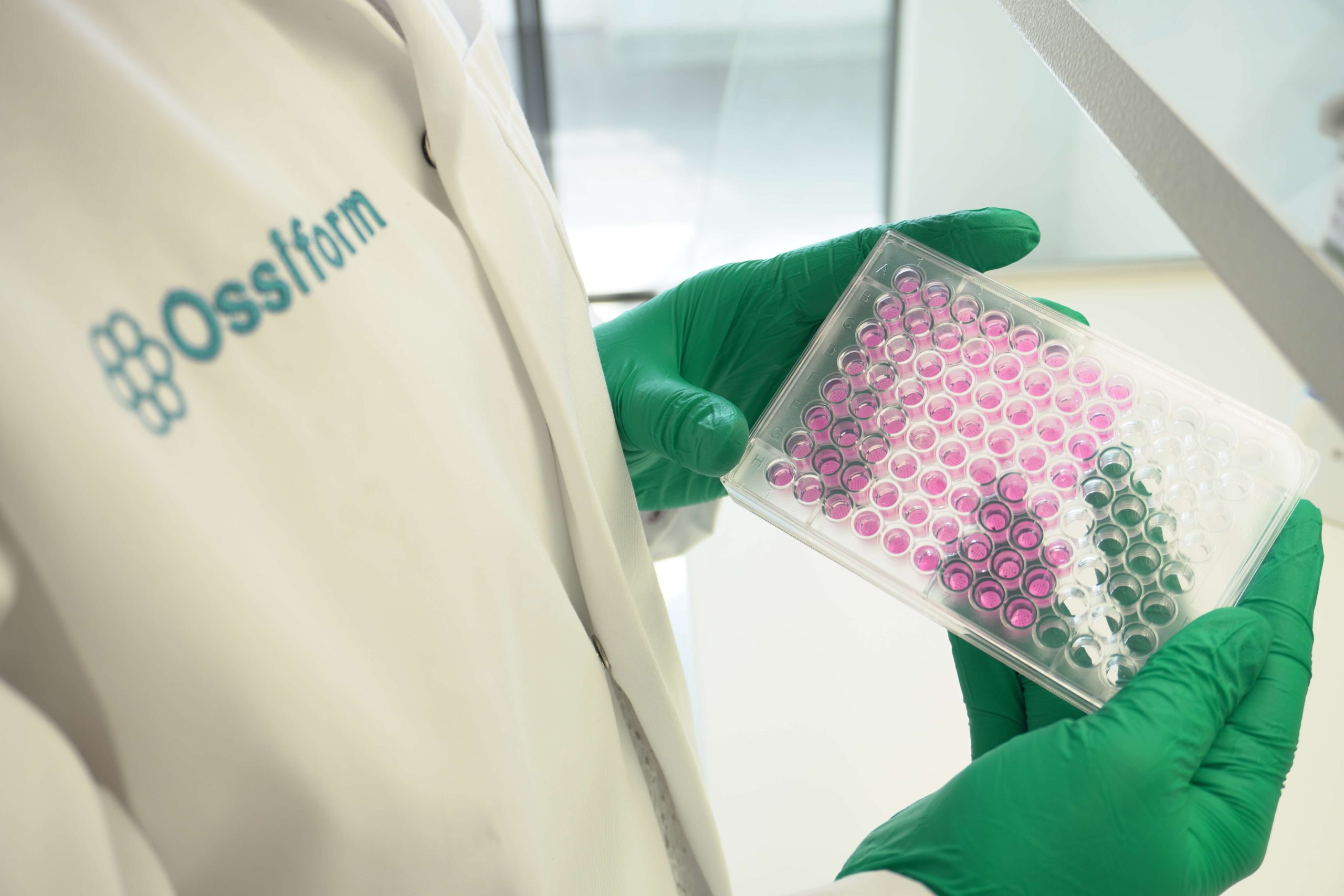

Want assistance with your next
research project?
Patent status: The product is protected by one or more US, European, and/or foreign patents.
Disclaimer: The products are “For Research Use Only (RUO)” and should not be used for clinical purposes. Ossiform® makes no other warranties, expressed or implied, including the implied warranty of merchantability and the implied warranty of fitness for particular purpose.

